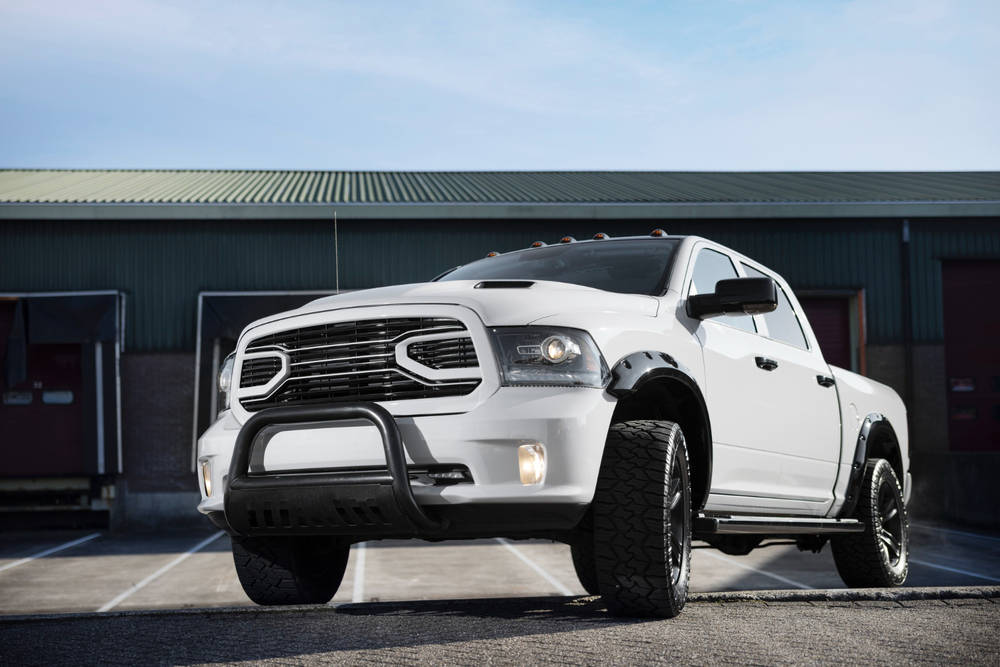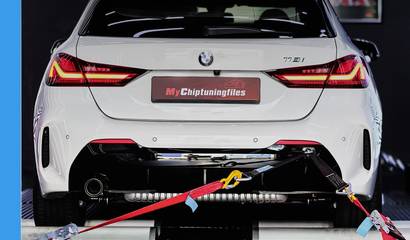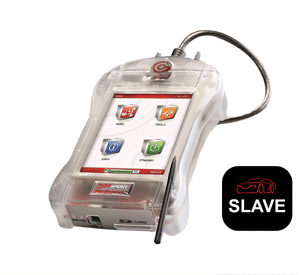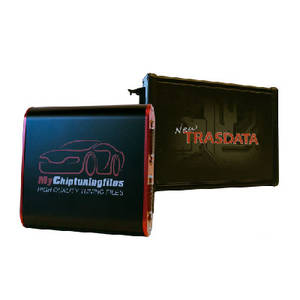Monday 17 November

While you go buying a car, you may hear the debate of AWD vs 4WD. They seem similar, but there is a difference between them. By learning the core clarifications between all-wheel drive and four-wheel drive, you will be able to discriminate and pick the one that is yours. This section will explain the difference between four and all-wheel drive in an easy manner. You will be able to understand how the power is delivered via the individualized power train to the wheels and also explain why using every one of them is advantageous. In addition, you will learn which of these two approaches is likely chosen for a specific weather condition. After learning the characteristics of 4WD vs. AWD, you will be able to decide which is the best car to buy.
Introduction about AWD vs. 4WD
AWD vs 4WD comparison often becomes one of the topics that drivers discuss. If AWD is a perfect option for handling different surfaces and 4WD takes the lead with its reliable drivetrain in the jungle.
All-wheel drive
AWD meaning "all-wheel drive," signifies the fact that all wheels of cars receive power from the front, rear, driver's, and passenger's sides simultaneously. FWD systems were mostly created for on-road driving, and they remain stabilized with improved handling. These tires are tough enough to give you the traction necessary even on icy and slick surfaces so that you will have a peasy time driving, and the car will also stay in control. Most systems are on the operator's menu, and one doesn't have to do anything to run them.
Four-wheel drive (4WD)
4WD meaning is four-wheel drive; 4WD cars and all-wheel-driven cars maintain the distribution of power on all four wheels, and the distinction between the mechanisms is the reason why 4WD functions better on rough terrains. A selectable 4WD system has to be between a two and a four-wheel drive. The first one is smoothness, and the other is not smooth, which is needed for uneven roads.
For a common driving across the normal roads in regular condition, AWD should be able to cater for your wishes and offer an equilibrium of performance, handling, and efficiency.
Nevertheless, if you are up to traveling off-road terrain, besides stronger traction, 4WD is likely the best option for you. At the end of it all, the decision on which system suits you the best is primarily hinged on how and where you plan to drive the most.
Tip: Do you know about WinOLS?
What Is All-Wheel Drive and How Does It Work?
AWD is a process where the power goes to all four of the wheels in the vehicle. It gives the driver more precise grip ability. It is best especially when the road surface becomes slick or bumpy.
Through AWD, torque from the engine is centrally split, and is then evenly distributed to both front and rear axles. The front and rear differentials mate with that power and send it to the wheels of the left and right side. Some AWD systems always keep the powertrain engaged, while others will just drive on the front two wheels until they detect a lack of drive or power, then automatically change to AWD.
Full-Time AWD
In full-time AWD, all four wheels are driven regardless of the outside condition. This leads to the best potential handling and stability because power can be progressively shifted between the axles as needed. On the other hand, its disadvantages comprise the fact that it does not improve the fuel economy since the drivetrain is constantly in operation.
Those people-hauling vehicles that are all-wheel drive are the Subaru Outback and the models in the Cherokee series from Jeep.
Part-Time 4WD
Generally, in Part-time 4WD, only two wheels (front or rear) receive power in order to save fuel. In circumstances requiring more power, you can engage the transfer case manually and send power to all four wheels. Half-time 4WD does well on the road and off-road; it is still good in deep snow, mud, and the like. You are required to manually disengage the front axle when the vehicle is back on the dry pavement, or else it can lead to the damaged drivetrain.
Automatic 4WD
Automatic 4-Wheel Drive (4WD), most commonly known as All-Wheel Drive (AWD), senses when more grip is required and redirects power to all four tires. It then converts back to two-wheel drive when the road becomes better for greater fuel efficiency. Automatic 4WD is very handy for most situations and can also tackle moderate off-roading or snow driving.
Yet, on the toughest off-road tracks, there might be more value in a part-time or full-time 4WD system instead.
A four-wheel drive can provide you with a more improved safety, comfort, and adventure. Whether you need full-time 4WD for hardcore off-roading, or part-time for occasional light duty, the truck has the ability to handle all kinds of terrains with ease.
4WD if you occasionally have a trail use, or automatic AWD for year-round on-road driving, you are ready for any adventure you want to go.
AWD - Always On the Go
AWD systems are made in such a way as to give the necessary power to all four wheels at once and continuously while cruising for the best stability and handling. The power is automatically shared between the front and rear axles as necessary under driving circumstances.
All-wheel drive is the best option available if you often drive on snow and ice, as it always tries to maintain maximum traction. The most preferred models are the Subaru Outback, Audi A4, and the Toyota Highlander.
4WD - Engage When Needed
The main difference is that the 4WD system also powers all four wheels, and unlike AWD, the driver has to manually engage the system whenever specific conditions like snow, ice, or off-roading are required.
On smooth surface dry roads in normal driving conditions, 4WD is disengaged, only powering two wheels (usually rear wheels most of the time). 4WD can be used when you occasionally require extra traction for winter or light off-roading and want to achieve higher fuel efficiency when the extra traction isn't needed.
The Verdict
AWD is easier to use because it always optimizes the grip, while 4WD has to be manually switched on. On the contrary, when 4WD is not in use, it has a slightly better fuel economy. For the very best snow performance, look out for AWD and 4WD systems from well-known brands, such as Subaru, Audi, Jeep, and Toyota. Accordingly, for ultimate winter driving, you need to install the right winter tires regardless of the snow depth.
Also read: 2023 TOYOTA PRIUS COMPLETE REVIEW WITH FEATURES AND PRICE
What Are the Advantages and Disadvantages of AWD?
Superior Traction and Handling
An additional benefit of AWD is the edge in braking, cornering, and performance on the slippery or uneven roads. In these vehicles, which send power to all four wheels, their overall traction is much better on slippery, snowy or unsurfaced roads. It can provide you with the opportunity of faster reaction time for smooth acceleration and braking and sharper cornering altogether.
Owners of those vehicles, which often go through twisting mountain roads or unpaved trails, benefit most from the all-wheel drive.
Higher Resale Value
Generally, AWD automobiles' values in the resale market are higher than those of two-wheel drive types. That is first because AWD is a must-have part for many car owners, mainly in areas that frequently receive rainfall or snowfall. The enhanced demand commonly brings AWD models to retain their value better over the period. There is another argument to be made on how a heftier sticker price would be compensated with a better resale value in case you trade in your vehicles every couple of years.
Lower Fuel Economy
One way in which AWD falls short is that, often, it is less fuel efficient than the two-wheel drive vehicle. Similar to the transfer case, drive shaft, axles, and differentials, all the components need power to operate; hence, the efficiency goes down. That can be seen mostly when driving on even, hard-surface roads, where AWD offers practically no benefit. If top-rated fuel efficiency is the main concern, it is more likely to be found in a FWD vehicle.
In the end, AWD brackets a lot of drivers, especially when driving through areas that are often wet or snowy, or one is also driving through dirt roads. Nevertheless, the fuel consumption rate and cost are also essential for you as you make your choices about your specific needs and input. Owners of a vehicle find all-wheel drive beneficial much more than the cons, but the conclusion should be one of pros vs. cons and how it fits into their particular needs.
What Are the Advantages and Disadvantages of 4WD?
This is one of the most asked questions when it comes to cars. Many drivers consider 4WD to be a standard vehicle feature. It has an important role in improving functionality and convenience.
4WD or four wheat drive is a method of driving that transfers the engine's power to all four wheels of a vehicle.
Each wheel will receive traction powered by its own driveline, giving you better speeds, stopping power, and control on hills, rocks, or any other uneven road surface.
Such plow sets enable avoiding getting stuck in mud or snow. This also gives the opportunity to travel along dirt roads and off tracks that are not accessible under usual circumstances.
On the other hand, environmental regulations may consider 4WD a more fuel-inefficient option. Because the engine should be always running to drive all components, the fuel consumption will increase by about 10-15%, and the gas mileage will be worse than that of a two-wheel driving vehicle. 4WD is portion of manual weight of the vehicles that again reduces efficiency. We also need to consider that an additional weight and complex nature of such a system complicates servicing and repairing it.
For some drivers, 4WD improves the sense of being in control on roads. As 4WD boosts traction through tackling slippery conditions, it does not improve steering or braking performance. Drives must exercise caution, most particularly on road ways that are covered with water or ice. It is fair enough to note that the speed for conditions could be very dangerous even with an all-wheel-drive.
The fourth shortcoming is that 4WD is possibly destructive to roads and pathways. The increased grip also induces more wear and degradation but mostly on unpaved grounds. Hence, many routes prevent 4W drive vehicles to go through the wet season or they limit the types of tires allowed.
If you often drive on a very rugged and unpaved road or in muddy weather, you may need a 4WD vehicle, taking into account its advantages. However, this will not be the case for some extreme conditions, and the extra money on the bills for gas and repair shops won't be well spent.
Difference between AWD and 4WD
You have two main options when it comes to powering all your vehicle's wheels. These options include front or all-wheel drive and four-wheel drive. There is a difference between AWD and 4WD systems in their mechanism of work. Therefore, this information has to be well understood in the buying process.
AWD systems are designed to support mainly the on-road driving. They enhance the driver's control by sending power to all four wheels simultaneously in order to improve cornering and grip. The power allocation between the front and rear axles is adaptive, however the wheels may revolve at different rates in accordance to the road conditions. Such ensures a better driving experience in general.
4WD systems are better built to withstand the roughness of the terrain for an off-road excursion. They apply a differential lock, which locks the front and rear axles, preventing speed differences. Here, every wheel gets all powers of traction for climbing over uneven areas. And although this is good on gravel roads, it makes the drive smoother on normal roads. In 99% of 4WD systems, it is necessary to change driving modes by hand in accordance with your current situation.
One more key difference is that 4WD systems have a higher ground clearance, and usually, they use more robust components to handle off-roading in harder conditions. The AWD systems, which are designed mostly for road driving, usually have a lower stance and are lighter weight because their chief target is on the streets.
In the end, it is a question of whether you choose to carpool, take public transportation, or use your car the most, and where. If the handling and stability while driving on the road in various weather conditions in the first instance is what you would want then you really need to go for an AWD system. For the real madness and if you need to go off-road a 4WD is the only option.
However, a few high-end SUVs and trucks offer multi-mode AWD/4WD systems as an option that can handle both on- and off-road driving conditions, providing the best of the mix and fitting.
Increase Your Company’s Success Rate Along With MyChipTuningFiles
Is your business exploring the world of chiptuning to enhance vehicle performance and efficiency? You no longer have to seek for different choices. Here is MyChipTuningFiles to take care of everything. What we are best at is our top-notch chiptuning service, which is configured to satisfy your unique needs. In short, we are here for all of those who seek to know more about chiptuning technology or need guidance in the implementation of their fleets’ operations. With our cutting-edge chip tuning tools and expertise, we empower businesses to optimize their fleets for maximum performance. We supply top-quality software and hardware solutions that will make your vehicles succeed even on urban roads or wild off-road terrain. Seize the opportunity to upgrade your fleet through chiptuning, and be prepared for upcoming challenges. Join the MyChipTuningFiles crew, and you will feel the difference in engine output.
Conclusion
Finally, knowing the differences between AWD vs 4WD is of the essence when making the decision on your driving convenience. Although AWD and 4WD have many intersections, there are some distinguishing heights you should be aware of if you're looking for a new car. As to AWD, the 4WD one is more useful in slippery situations. However, it's also great for off-road driving. For an average person, an all-wheel drive will be more than enough to fulfill their day-to-day city driving and adverse weather conditions. If you are willing to take the dirt highways, a pull truck, or mountain acrobatics, an FWD is a better choice. Nevertheless, it doesn't matter; hence, you should be alerted and check for system limits. When everything is considered, I believe the main concern should be about selecting the best appropriate tool that matches your driving capabilities and lifestyle.
news.related_news
Chiptuning tools
Whether you own a car, truck or tractor: we have the best equipment and software for tuning your petrol and diesel engine. With our chiptuning tools it is possible to easily read out the original engine software of your vehicle and upload it to our website. And then it's up to us to provide you with high-quality and customized chip tuning files. Curious about our range of chiptuning tools? Check it out via the button below!








